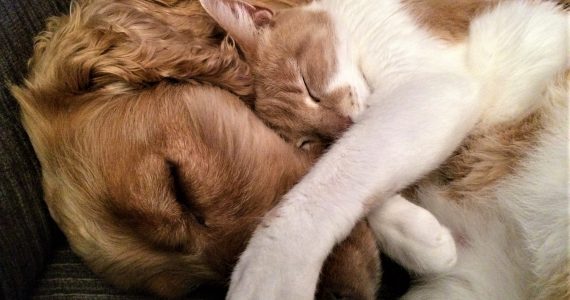Dog and Cat Facts
Dog and Cat Facts for Kids
Celebrate International Cat Day on August 8th and International Dog Day on August 26th
To mark the occasions, we’ve put together a list of 20 fun facts for you. How many did you know already?
- The nose prints of both dogs and cats are unique – ridged in a pattern just like fingerprints of humans.
- A cat’s heart beats twice as fast as a human heart – 110 to 140 beats per minute.
- It takes eighteen muscles to move a dog’s ear. This specificity of motion helps the dog pinpoint the origins of sounds much faster than a human can.
- A single pair of cats and their kittens can produce as many as 420,000 kittens in just 7 years. A perfect reason to ensure your cat is spayed/neutered!
- The average dog can run about 30 km/hr. Greyhounds are the fastest dogs on earth and can run at speeds of 72 km/hr.
- Cats are the sleepiest of all mammals. They spend 16 hours of each day sleeping. With that in mind, a seven-year-old cat has only been awake for two years of its life!
- A dog can locate the source of a sound in 1/600 of a second and can hear sounds four times farther away than a human can.
- Cats spend 30 per cent of their waking hours grooming themselves.
- Dogs can see in colour, though they most likely see colours similar to a colour-blind human. They can see better when the light is low.
- Cats are lactose intolerant. Like most mammals, cats lose the ability to digest dairy after infancy. Feeding milk to a cat can encourage stomach upset and diarrhoea.
- Dogs with “squashed” faces have more health problems. The structure of the faces of pugs, boxers, and bulldogs makes them more prone to respiratory problems, dental problems, and other health issues.
- All kittens are born with blue eyes. They begin to change colour about two weeks after their eyes open.
- A dog’s sense of smell is up to one hundred thousand times more sensitive than a human’s. While humans have about five million scent receptors in their noses, a bloodhound has up to three hundred million.
- When cats walk, their left front leg moves in tandem with their left back leg, and their right legs do the same. The only other animals that walk this way are giraffes and camels.
- Dogs’ wet noses help them smell better. The mucus attracts and “catches” more chemical scent particles in the air.
- Cats don’t meow at other cats. They reserve this sound for getting attention (not to mention food) from humans.
- Dogs are about as smart as a two- or three-year-old child. This means they can understand about 150-200 words, including signals and hand movements with the same meaning as words.
- The proper name for a group of cats is a clowder. A group of kittens is called a kindle.
- Dogs’ only sweat glands are between the pads of their feet. They dissipate the majority of their heat by panting, a method far more effective than allowing moisture to evaporate from the skin.
- Your dog or cat can read your moods. If you’re sad or under stress, you may also notice a difference in your dog or cat’s behaviour.
To learn more about your dog or cat’s health and behaviour, contact us to book an appointment.

